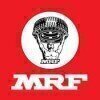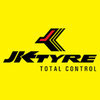
i
Aptiv
Filter interviews by
Aptiv Interview Questions and Answers
62 Interview questions
Incident management is a structured approach to handling unexpected events in software systems to minimize impact and restore services.
Identify the incident: For example, a server goes down unexpectedly.
Categorize and prioritize: Determine the severity of the incident, such as critical, high, medium, or low.
Assign a response team: Designate engineers or support staff to address the incident based on expertise.
Comm...
Fine-tuning a use case involves refining requirements, validating assumptions, and ensuring alignment with user needs.
Identify key stakeholders and gather their requirements through interviews or surveys.
Create user personas to understand different user needs and scenarios.
Develop prototypes or wireframes to visualize the use case and gather feedback.
Iterate on the use case based on feedback, ensuring it meets bot...
I have hands-on experience in material handling, focusing on safety, efficiency, and proper equipment usage.
Operated forklifts and pallet jacks to move materials safely in a warehouse setting.
Implemented inventory management systems to track material flow and reduce waste.
Conducted regular safety inspections of handling equipment to ensure compliance with regulations.
Trained new employees on proper material handli...
My approach to Kaizen focuses on continuous improvement through small, incremental changes that enhance efficiency and quality.
Emphasize teamwork: Involve all employees in identifying areas for improvement, as seen in Toyota's production system.
Encourage feedback: Regularly solicit input from team members to identify inefficiencies, similar to how many tech companies use agile methodologies.
Implement small changes...
An anagram program checks if two strings can be rearranged to form each other.
Use sorting: Sort both strings and compare. Example: 'listen' and 'silent' become 'eilnst'.
Use frequency count: Count characters in both strings. Example: 'triangle' and 'integral' have the same counts.
Consider case sensitivity: Decide if 'Listen' and 'Silent' are anagrams based on case.
Ignore spaces and punctuation: 'A gentleman' and 'E...
Harness manufacturing involves various components like wires, connectors, and insulation materials for electrical systems.
Wires: Conductive materials like copper or aluminum are used for electrical connections.
Connectors: Components like plugs and sockets that join different wires and devices.
Insulation: Materials such as PVC or rubber that protect wires from damage and prevent short circuits.
Terminals: Metal fitt...
Horizontal scaling involves adding more instances of a service to handle increased load, achievable in Kubernetes through various methods.
Kubernetes allows horizontal scaling using the Horizontal Pod Autoscaler (HPA).
HPA automatically adjusts the number of pod replicas based on CPU utilization or other select metrics.
For example, if CPU usage exceeds a defined threshold, HPA can increase the number of pods to dist...
Effective error handling in distributed training ensures robustness and reliability in machine learning workflows.
Implement logging mechanisms to capture errors and warnings during training.
Use checkpointing to save model states periodically, allowing recovery from failures.
Employ automated retries for transient errors, such as network issues.
Monitor resource utilization and set up alerts for anomalies, like GPU m...
Implementing multi-tenancy in Kubernetes involves resource isolation, access control, and efficient resource management.
Use namespaces to isolate resources for different tenants. For example, create a namespace for each client.
Implement Role-Based Access Control (RBAC) to manage permissions for users and service accounts within each namespace.
Utilize resource quotas to limit resource usage per tenant, ensuring fai...
Productivity measures the efficiency of production, often defined as the ratio of outputs to inputs in a given timeframe.
Productivity can be measured in various ways, such as output per labor hour.
For example, a factory producing 100 widgets in 10 hours has a productivity of 10 widgets per hour.
Improving productivity can involve optimizing processes, reducing waste, or enhancing worker skills.
In agriculture, produ...
Aptiv Interview Experiences
108 interviews found
I appeared for an interview in Jan 2025.
(3 Questions)
- Q1. What is 5 core tool , 7 qc tool , 8 D , why why analysis
- Ans.
Core tools and techniques used in quality engineering include 5 core tools, 7 QC tools, 8D methodology, and the Why-Why analysis.
5 Core Tools: APQP, PPAP, FMEA, MSA, SPC
7 QC Tools: Check sheets, Pareto charts, Cause-and-effect diagrams, Histograms, Scatter diagrams, Control charts, Flowcharts
8D Methodology: Eight disciplines problem solving approach used to identify, correct, and prevent recurring problems
Why-Why Analy...
- Q2. What is the role of company in DWM
- Ans.
The role of a company in Design for Manufacturability (DWM) is to ensure that products are designed in a way that makes them easy and cost-effective to manufacture.
Ensuring that product designs are optimized for efficient manufacturing processes
Collaborating with design and manufacturing teams to identify and address potential manufacturing challenges early in the design phase
Implementing design guidelines and best pra...
- Q3. What is MSA and SPC explain
- Ans.
MSA stands for Measurement System Analysis and SPC stands for Statistical Process Control.
MSA is a method used to assess the measurement system variation to ensure data accuracy.
SPC is a method used to monitor and control a process through statistical analysis.
MSA includes Gage R&R studies to evaluate the measurement system's repeatability and reproducibility.
SPC involves using control charts to detect any variatio...
(2 Questions)
- Q1. What is process quality
- Ans.
Process quality refers to the level of consistency, accuracy, and effectiveness in the execution of a particular process.
Process quality is about ensuring that a specific process consistently meets the desired standards and requirements.
It involves identifying and eliminating defects, errors, and variations in the process to improve overall quality.
Process quality can be measured using metrics such as defect rates, cyc...
- Q2. 8D explain.
- Ans.
8D is a problem-solving methodology used in quality management to identify, correct, and prevent recurring problems.
8D stands for 8 disciplines, each representing a step in the problem-solving process
Steps include defining the problem, forming a team, identifying root causes, implementing corrective actions, and preventing recurrence
Example: A manufacturing company uses 8D to address a recurring defect in their product
Interview Preparation Tips
I applied via Campus Placement and was interviewed in Oct 2024. There were 3 interview rounds.
Aptitude round consists of aptitudes and some pseudocode snippets to solve and it also had one medium level coding question and one hard level coding question.
(5 Questions)
- Q1. Write a pattern pyramid number in Java
- Ans.
Pattern pyramid number in Java
Use nested loops to print the pyramid pattern
Increment the number in each row
Handle spaces for proper alignment
- Q2. Write a C program to find Factorial of a number
- Ans.
A C program to find the factorial of a number using recursion
Use a recursive function to calculate the factorial
Handle the base case when the number is 0 or 1
Multiply the number with the factorial of (number-1) in each recursive call
- Q3. What is Little endian and Big endian in C
- Ans.
Little endian and Big endian are byte ordering formats in which multi-byte data is stored in memory.
Little endian: Least significant byte is stored at the lowest memory address.
Big endian: Most significant byte is stored at the lowest memory address.
Example: In Little endian, the number 0x12345678 is stored as 78 56 34 12 in memory.
Example: In Big endian, the same number is stored as 12 34 56 78 in memory.
- Q4. Why do you use Docker and Git
- Ans.
I use Docker for containerization to easily manage and deploy applications, and Git for version control to collaborate and track changes.
Docker allows for consistent development environments across different machines
Git helps track changes, collaborate with team members, and revert to previous versions if needed
Both tools improve efficiency and productivity in software development
- Q5. Draw architecture diagram for your Machine Learning Project
- Ans.
The architecture diagram for a Machine Learning project typically includes data preprocessing, model training, evaluation, and deployment stages.
Data preprocessing stage involves cleaning, transforming, and preparing the data for model training.
Model training stage includes selecting the appropriate algorithm, training the model on the data, and tuning hyperparameters.
Evaluation stage involves assessing the model's per...
(3 Questions)
- Q1. Tell me about your family
- Ans.
I come from a close-knit family of four, including my parents and younger sister.
My parents have always been supportive of my career choices and encouraged me to pursue my passion for software engineering.
My younger sister is currently studying computer science and we often collaborate on coding projects together.
Family gatherings are important to us and we enjoy spending quality time together, whether it's celebrating...
- Q2. Which is your favorite subject and why
- Q3. What will you do if you get rejected in this round
Interview Preparation Tips
- C
- OS
- Data Structures
Skills evaluated in this interview
I appeared for an interview in Feb 2025, where I was asked the following questions.
- Q1. 1st interview & 2nd Interview - Technical Round 1) Introduction. 2) Your Job profile explaining. 3) Wiring Harness Manufacturing process. 4) how to select suitable wire seal 5) Manual BOM creation proc...
- Q2. HR Round :- 1) Introduction 2) Why u want to join Aptive 3) Sallery expectation
I appeared for an interview in Apr 2025, where I was asked the following questions.
- Q1. What is your approach to Kaizen?
- Ans.
My approach to Kaizen focuses on continuous improvement through small, incremental changes that enhance efficiency and quality.
Emphasize teamwork: Involve all employees in identifying areas for improvement, as seen in Toyota's production system.
Encourage feedback: Regularly solicit input from team members to identify inefficiencies, similar to how many tech companies use agile methodologies.
Implement small changes: Foc...
- Q2. What is your experience with material handling?
- Ans.
I have hands-on experience in material handling, focusing on safety, efficiency, and proper equipment usage.
Operated forklifts and pallet jacks to move materials safely in a warehouse setting.
Implemented inventory management systems to track material flow and reduce waste.
Conducted regular safety inspections of handling equipment to ensure compliance with regulations.
Trained new employees on proper material handling te...
I appeared for an interview in Mar 2025, where I was asked the following questions.
- Q1. Asked about the domain and architecture design
- Q2. Basic programming
- Q3. Anagram program
- Ans.
An anagram program checks if two strings can be rearranged to form each other.
Use sorting: Sort both strings and compare. Example: 'listen' and 'silent' become 'eilnst'.
Use frequency count: Count characters in both strings. Example: 'triangle' and 'integral' have the same counts.
Consider case sensitivity: Decide if 'Listen' and 'Silent' are anagrams based on case.
Ignore spaces and punctuation: 'A gentleman' and 'Elegan...
- Q4. Sorting array elements
- Q5. Hashmap basic questions
I applied via Company Website and was interviewed in Jul 2024. There were 3 interview rounds.
Apptitude on topics distance and time,time work,profit loss etc,embedded c programs
(2 Questions)
- Q1. Bubble sorting code,what is oops etc
- Ans.
Bubble sorting is a simple sorting algorithm that repeatedly steps through the list, compares adjacent elements, and swaps them if they are in the wrong order.
Bubble sort is not efficient for large datasets due to its O(n^2) time complexity.
Object-oriented programming (OOP) is a programming paradigm based on the concept of 'objects', which can contain data in the form of fields (attributes) and code in the form of proc...
- Q2. Project explanation
(2 Questions)
- Q1. Tell me about yourself
- Ans.
I am a passionate AI/ML enthusiast with a background in computer science and experience in developing machine learning models.
Background in computer science
Experience in developing machine learning models
Passionate about AI/ML
Strong problem-solving skills
Familiarity with various AI/ML algorithms and techniques
- Q2. Why should we hire you
- Ans.
I have a strong background in AI/ML with proven experience in developing innovative solutions.
I have a Master's degree in Artificial Intelligence and Machine Learning.
I have successfully implemented various AI/ML projects in previous roles, resulting in improved efficiency and accuracy.
I am proficient in programming languages such as Python, R, and Java, as well as popular AI/ML frameworks like TensorFlow and PyTorch.
(2 Questions)
- Q1. Work experience & Achievement in carrier
- Ans.
Experienced in quality management with a focus on process improvement and team leadership, achieving significant operational enhancements.
Led a quality improvement project that reduced defects by 30% in six months.
Implemented a new quality assurance protocol that increased customer satisfaction scores by 15%.
Trained and mentored a team of 10 quality analysts, enhancing their skills and productivity.
Collaborated with cr...
- Q2. Problem solving
I applied via Company Website and was interviewed in Jun 2024. There were 2 interview rounds.
(1 Question)
- Q1. Questions are mostly related to previous work experience.
(1 Question)
- Q1. It's a techno managerial round. This round also focuses on work done previously.
Interview Preparation Tips
I applied via Naukri.com and was interviewed in Jun 2024. There were 2 interview rounds.
Bit manipulation , Reverse of string quesiton , qualifiers , Storage class .
(2 Questions)
- Q1. Bit manipulation set a bit , clear a bit , Toggle a bit
- Q2. Related to integration project
Interview Preparation Tips
Skills evaluated in this interview
(2 Questions)
- Q1. What is the smart pointers?
- Q2. What is the lamda function?
(2 Questions)
- Q1. What is threading?
- Q2. What is lamda function?
Skills evaluated in this interview
Top trending discussions






Aptiv Interview FAQs
The duration of Aptiv interview process can vary, but typically it takes about less than 2 weeks to complete.
Tell us how to improve this page.
Aptiv Interviews By Designations
- Aptiv Senior Software Engineer Interview Questions
- Aptiv Advanced Software Engineer Interview Questions
- Aptiv Technical Lead Interview Questions
- Aptiv Software Engineer Interview Questions
- Aptiv Graduate Engineer Trainee (Get) Interview Questions
- Aptiv Design Engineer Interview Questions
- Aptiv Senior Production Engineer Interview Questions
- Aptiv Intern Interview Questions
- Show more
Interview Questions for Popular Designations
- Senior Software Engineer Interview Questions
- Advanced Software Engineer Interview Questions
- Design Engineer Interview Questions
- Software Engineer Interview Questions
- Technical Lead Interview Questions
- Graduate Engineer Trainee (Get) Interview Questions
- Software Developer Interview Questions
- Intern Interview Questions
- Show more
Overall Interview Experience Rating
based on 86 interview experiences
Difficulty level
Duration
Interview Questions from Similar Companies
13-15 Yrs
₹ 4.3-113 LPA
8-14 Yrs
Not Disclosed
|
Senior Software Engineer
789
salaries
| ₹9.9 L/yr - ₹19 L/yr |
|
Technical Lead
439
salaries
| ₹21.3 L/yr - ₹36 L/yr |
|
Software Engineer
423
salaries
| ₹7.8 L/yr - ₹14 L/yr |
|
Advanced Software Engineer
419
salaries
| ₹16 L/yr - ₹26.5 L/yr |
|
Design Engineer
209
salaries
| ₹4.5 L/yr - ₹10.1 L/yr |

Bosch

Samvardhana Motherson Group

MRF Tyres

Yazaki
- Home >
- Interviews >
- Aptiv Interview Questions












